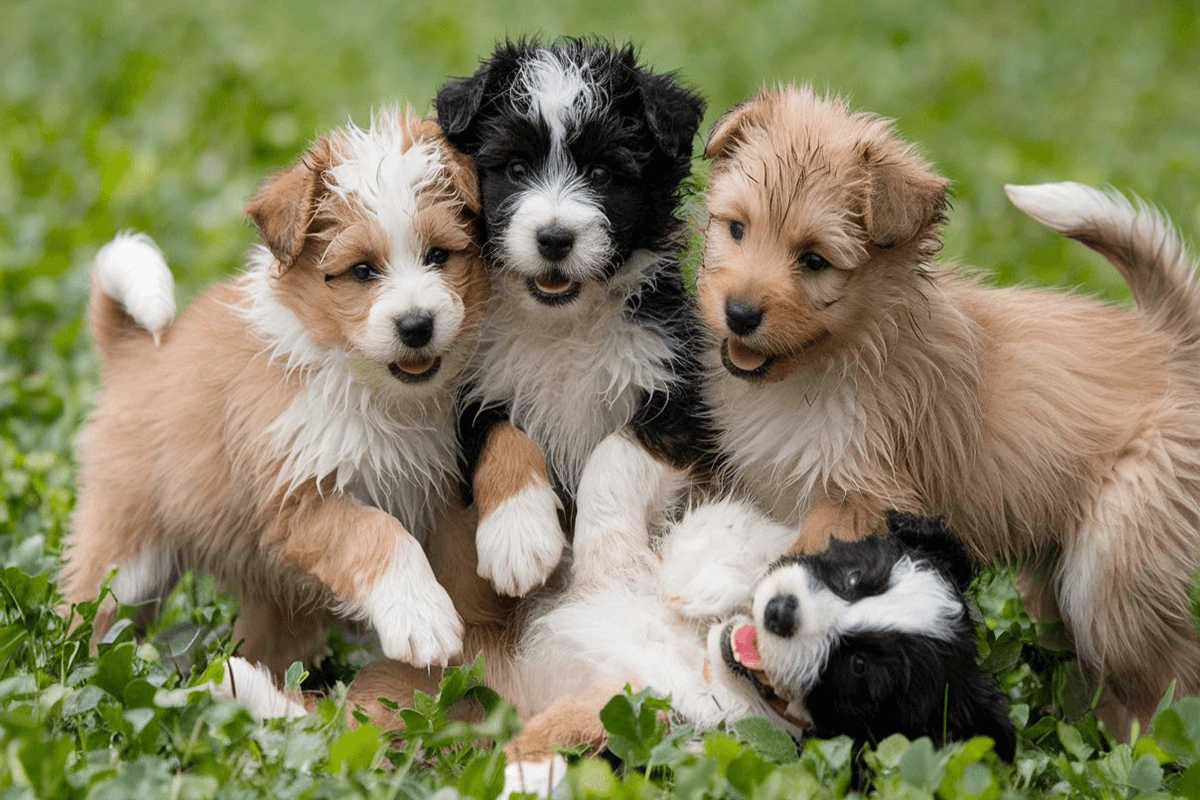Bringing home a fluffy puppy fills your life with joy, laughter, and unconditional love. These little bundles of fur instantly become part of your family, and their playful antics can brighten even the dullest days. However, owning a fluffy puppy comes with responsibilities that go beyond cuddles and playtime. Providing proper care ensures your puppy stays healthy, happy, and well-adjusted as they grow.
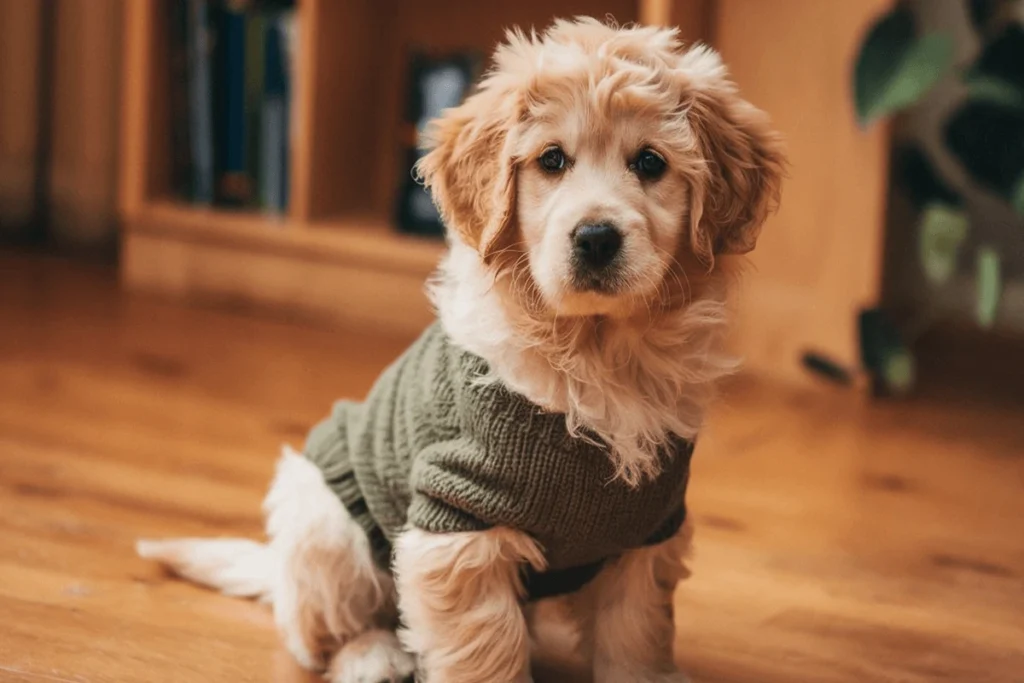
Caring for a fluffy puppy involves more than just feeding and grooming. It requires creating a safe and welcoming home, building a strong bond through training and socialization, and staying attentive to their unique health and grooming needs. This guide will help you navigate every aspect of puppy care, from choosing the best grooming tools to understanding how to meet your puppy’s emotional and physical needs.
Whether you’re a first-time dog owner or looking to refine your puppy care routine, this guide offers practical tips and expert advice to make sure your fluffy puppy thrives in your care. Let’s dive into the essentials and ensure your furry friend gets the love and attention they deserve!
Preparing for Your Fluffy Puppy
Creating a Puppy-Friendly Home
Preparing your home for a new fluffy puppy ensures their safety and comfort while also protecting your belongings. Puppies are naturally curious and love to explore, so you need to puppy-proof every corner of your house. Secure loose wires and electrical cords to prevent chewing accidents. Remove toxic plants and household items that could pose a danger. Install baby gates to block off areas where your puppy shouldn’t roam freely, like staircases or rooms with fragile furniture.
Set up a dedicated area for your puppy with a comfortable bed, water and food bowls, and some toys to keep them entertained. This space helps your puppy feel secure and gives them a designated spot to rest or play. A puppy-friendly home isn’t just about safety; it’s about creating an environment where your fluffy friend feels loved and cared for.
Essential Puppy Supplies
Having the right supplies on hand makes caring for your fluffy puppy much easier. Start with grooming essentials like puppy shampoo and a dog grooming brush to keep their coat clean and tangle-free. For teething puppies, invest in durable chew toys to soothe their gums while protecting your furniture.
When it comes to mealtime, choose high-quality food designed for your puppy’s breed and size. Opt for stainless steel or ceramic food and water bowls, as they’re easy to clean and don’t harbor bacteria. Don’t forget a comfortable, washable dog bed to provide your puppy with a cozy resting place. With these essentials, you’ll be well-prepared to meet your puppy’s daily needs.
Crate Training Tools For Fluffy Puppy
Crate training plays a vital role in teaching your fluffy puppy discipline and providing them with a safe retreat. Choose a crate that’s appropriately sized—large enough for your puppy to stand, turn around, and lie down comfortably, but not so big that they’re tempted to use one corner as a bathroom. Add a soft blanket or crate mat to make it cozy and inviting.
Stock up on puppy-safe treats to use as positive reinforcement when introducing your puppy to the crate. Interactive toys or puzzle feeders can keep your puppy entertained while they’re inside the crate, making the experience enjoyable. Remember to place the crate in a quiet area of your home where your puppy feels secure but can still see and hear the family. With the right tools and a gentle approach, crate training becomes a valuable part of your puppy’s routine.
Grooming Your Fluffy Puppy
How to Groom a Puppy
Grooming your puppy is more than just keeping them looking adorable—it’s essential for their health and comfort. Start by getting your puppy accustomed to being handled gently. Spend time brushing their fur daily or every other day, especially if they’re a fluffy breed prone to matting, like a Pomeranian or Samoyed. Regular brushing not only keeps their coat smooth but also stimulates the skin, promoting healthy fur growth.
Pay attention to sensitive areas like behind the ears, under the legs, and around the tail, as these spots can develop tangles. Check their paws for dirt, debris, or matting between the pads, and trim their nails when they get too long to prevent discomfort. If your puppy resists grooming at first, stay patient and use treats to create a positive association. Grooming should feel like a bonding experience, not a chore, for both you and your puppy.
Bathing a Fluffy Puppy
Bathing keeps your fluffy puppy’s coat clean and healthy, but over-bathing can strip their fur of essential oils. Aim to bathe your puppy once every 4–6 weeks, or more often if they get particularly dirty or smelly. Use a gentle, puppy-specific shampoo designed for their sensitive skin and avoid products with harsh chemicals or strong fragrances.
When bathing your puppy, use lukewarm water and a non-slip mat to ensure their safety. Wet their coat thoroughly and apply shampoo, focusing on areas like their paws, belly, and hindquarters. Rinse thoroughly to remove all shampoo residue, as leftover product can irritate their skin. After the bath, use a towel or a pet-safe blow dryer on a low setting to dry their coat completely, especially in colder months. Make bath time a calm and soothing experience to help your puppy feel at ease.
Fluffy Dog Grooming Tools
The right tools make grooming a fluffy puppy much easier and more effective. A slicker brush or pin brush works wonders for detangling thick, fluffy coats without causing discomfort. Use a wide-tooth comb for finishing touches, ensuring the fur is free from knots and tangles.
For trimming, invest in a pair of pet-safe scissors with rounded tips to tidy up areas like the paws, ears, or tail. Clippers designed for dogs can help maintain the length of their fur, but always use the correct blade size for your puppy’s breed. Don’t forget nail clippers or a grinder to keep their nails short and smooth.
A grooming spray or detangling solution can help manage tough knots while adding shine to their coat. Keep these tools in a dedicated grooming kit to stay organized and ready for regular grooming sessions. With these essentials, you’ll keep your fluffy puppy looking and feeling their best.
Feeding and Health Essentials
Best Dog Food for Puppies
Choosing the right food for your fluffy puppy sets the foundation for their growth, energy levels, and overall health. Puppies need a balanced diet rich in protein, healthy fats, and essential vitamins to support their rapid development. Look for dog food specifically formulated for puppies, as it contains the nutrients they need in appropriate proportions.
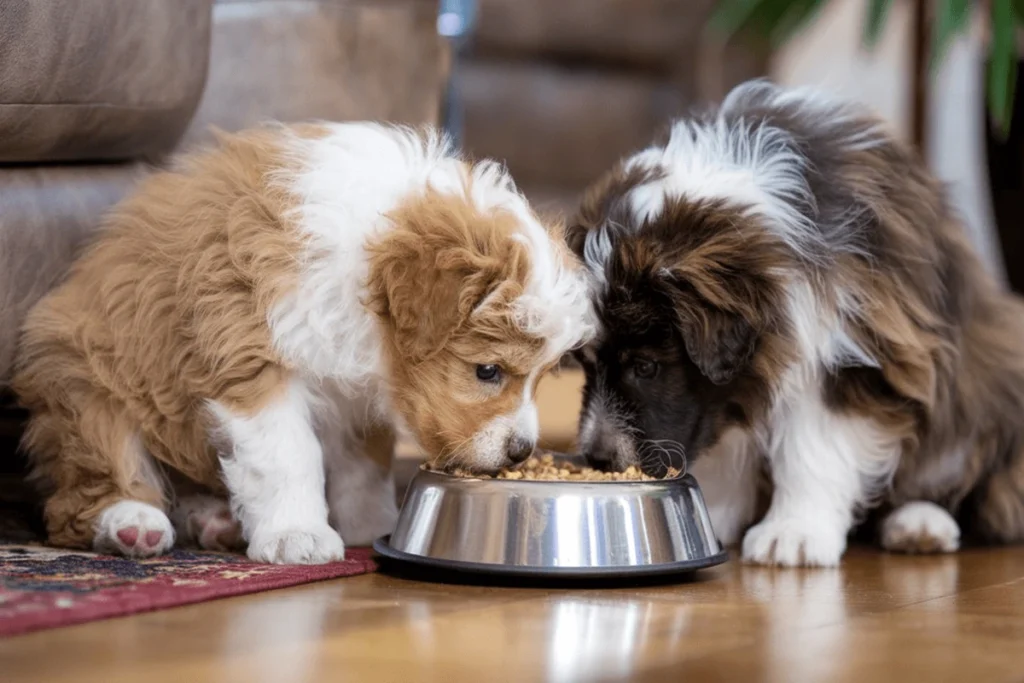
If your puppy belongs to a fluffy or small breed, consider their unique dietary requirements. For instance, small breeds may benefit from smaller kibble sizes that are easier to chew, while larger breeds might need food that supports joint and bone health. Always check the ingredients list to ensure the food is free from artificial additives, fillers, and by-products.
In addition to dry kibble, you can incorporate wet food or fresh, vet-approved options to add variety to their meals. Feed your puppy at regular intervals—typically three to four times a day—until they transition to an adult feeding schedule. Don’t forget to provide fresh, clean water at all times to keep them hydrated. Consult your veterinarian for personalized feeding recommendations based on your puppy’s breed, age, and activity level.
Puppy Vaccination Schedule
Vaccinations play a crucial role in protecting your puppy from dangerous diseases. Starting as early as 6–8 weeks old, your puppy will need a series of vaccinations to build their immunity. These include core vaccines like distemper, parvovirus, and adenovirus, which are essential for all dogs.
By 10–12 weeks, your puppy will need boosters for these core vaccines, along with optional vaccines like Bordetella if they’ll be exposed to other dogs frequently (e.g., in puppy classes or dog parks). Rabies vaccination usually occurs around 12–16 weeks, depending on local regulations.
Keep a vaccination schedule handy and mark your calendar for each vet visit to ensure your puppy stays on track. Some vaccines require annual boosters to maintain their effectiveness, so make vaccination part of your long-term care plan. Always ask your veterinarian about any additional vaccines that may benefit your puppy based on their lifestyle and environment.
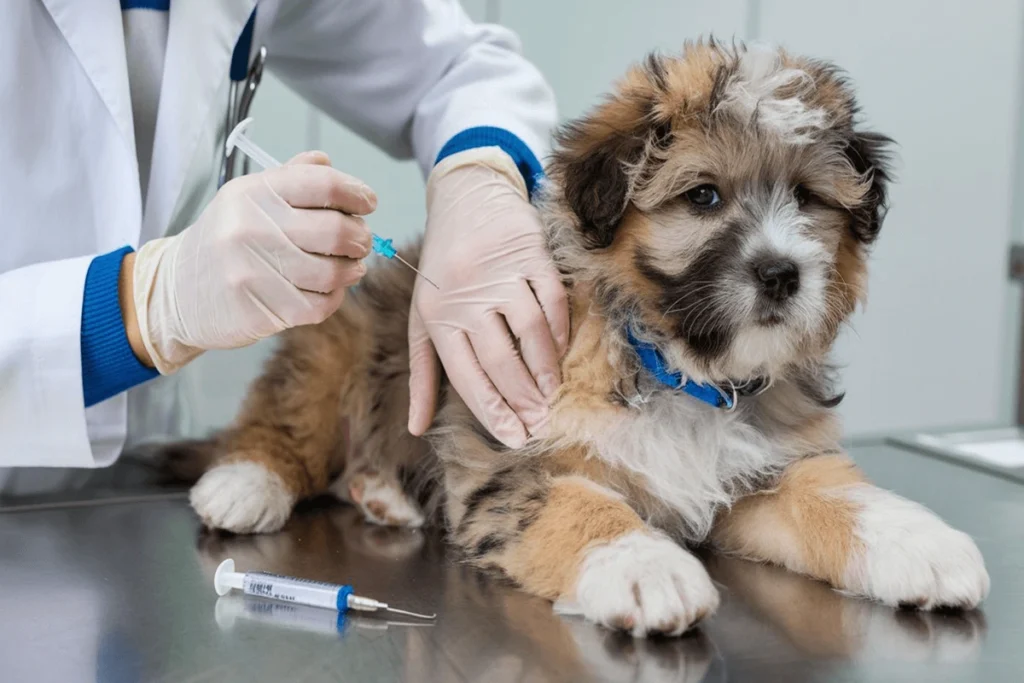
Preventing Puppy Health Issues
Preventing health issues in your fluffy puppy starts with regular vet check-ups and proactive care. Schedule a wellness visit soon after bringing your puppy home to establish a baseline for their health and to address any immediate concerns.
Parasite prevention is critical, so talk to your vet about flea, tick, and heartworm prevention. Stick to a routine deworming schedule, as puppies are especially vulnerable to intestinal parasites. Monitor your puppy for signs of discomfort, such as scratching, excessive licking, or lethargy, and address these issues promptly.
Dental health is often overlooked but equally important. Provide chew toys or dental treats to help clean their teeth naturally and start brushing their teeth with a puppy-safe toothpaste. Finally, maintain a clean living environment by regularly washing their bedding, toys, and food bowls. Preventative care ensures your puppy remains happy, healthy, and full of energy as they grow.
Training and Socializing Fluffy Puppies
Training a Fluffy Puppy
It establishes good behavior, builds trust, and strengthens your bond. Start training as early as possible, as puppies learn best when they’re young and impressionable. Begin with basic commands like “sit,” “stay,” and “come.” Use positive reinforcement techniques, such as treats, praise, or affection, to encourage desired behaviors. Be consistent with your cues and rewards so your puppy clearly understands what you expect.
House training is another essential part of early training. Establish a routine for potty breaks, taking your puppy outside frequently, especially after meals, naps, or playtime. Use a designated spot for potty time and reward them immediately after they go in the right place. Patience and consistency are key, as accidents are normal during the learning process.
As your puppy grows, introduce leash training to prepare them for walks. Use a comfortable harness and teach them to walk beside you without pulling. Training isn’t just about discipline; it’s an opportunity to teach your puppy how to navigate the world safely and confidently. Keep sessions short and fun to maintain their attention and ensure training becomes a positive experience.
Puppy Teething Solutions
Teething can be a challenging time for both puppies and their owners, but the right approach makes it manageable. Puppies start teething around 3–4 months old, and the process continues until their adult teeth come in. During this time, they’ll feel the urge to chew to relieve gum discomfort.
Provide a variety of chew toys specifically designed for teething puppies. Look for toys made of soft, durable materials that are gentle on their developing teeth but tough enough to withstand chewing. Freeze a damp washcloth or offer frozen rubber toys to soothe inflamed gums. Avoid giving your puppy hard items, like bones or sticks, as these can damage their teeth.
Redirect inappropriate chewing behavior to their toys whenever they gnaw on furniture, shoes, or other household items. Praise and reward them when they choose the correct item to chew. This not only helps with teething discomfort but also sets boundaries and encourages appropriate behavior. Teething can be tough, but with the right tools and patience, your puppy will get through it with ease.
Socializing Your Puppy
Socialization is one of the most important aspects of raising a well-behaved and confident puppy. Start exposing your fluffy puppy to new environments, sounds, people, and other animals as early as 8–12 weeks, when their socialization window is most open. Introduce them to various experiences, such as walking on different surfaces, meeting friendly dogs, or interacting with new people, to help them adapt to different situations.
Enroll your puppy in a socialization class or puppy kindergarten to give them structured opportunities to play with other dogs in a safe and supervised setting. These classes also help your puppy develop proper manners and reduce the risk of fear or aggression in unfamiliar situations.
At home, invite friends or family members over to help your puppy get used to meeting new people. Keep all interactions positive and avoid overwhelming your puppy with too much stimulation at once. A well-socialized puppy grows into a confident, well-adjusted adult dog that can handle life’s challenges with ease.
Maintaining Long-Term Happiness for Your Fluffy Puppy
Regular Veterinarian Care
Routine veterinary care forms the cornerstone of your fluffy puppy’s long-term health and well-being. Schedule your puppy’s first vet visit within a week of bringing them home to establish a health baseline. During this visit, the veterinarian will perform a physical examination, discuss vaccination schedules, and recommend flea, tick, and heartworm preventatives based on your location.
Make regular check-ups a habit, even if your puppy appears perfectly healthy. These visits allow your vet to detect and address potential health issues early. Keep track of your puppy’s weight, growth, and development to ensure they’re meeting milestones. Discuss spaying or neutering options with your vet, as this can have long-term benefits for their health and behavior.
Beyond physical health, don’t overlook dental care. Ask your vet to check your puppy’s teeth during visits and get recommendations for brushing techniques and products. By staying proactive with veterinary care, you can give your fluffy puppy the best chance for a healthy, happy life.
Caring for a Small Dog
Fluffy small dogs, like Pomeranians, Maltese, or Shih Tzus, have unique needs that require special attention. Their smaller size makes them more delicate, so handle them with care to avoid accidental injury. Use harnesses instead of collars for walks to protect their fragile necks from strain or injury.
Small dogs can be more susceptible to temperature changes, so keep them warm during colder months with cozy sweaters or blankets. They also tend to have faster metabolisms, so feed them smaller, more frequent meals using high-quality puppy food specifically designed for their size.
When grooming a small dog, pay attention to areas like the eyes and ears, as they are more prone to infections. Clean their face gently and trim hair around the eyes to prevent irritation. Small dogs often have big personalities, so providing consistent training and socialization is just as important to ensure they develop into well-behaved companions.
Building a Bond With your Fluffy Puppy
Building a strong bond with your fluffy puppy lays the foundation for a lifetime of trust and companionship. Spend quality time together every day, whether it’s through play, training sessions, or simple cuddling. Puppies thrive on attention and affection, so make an effort to meet their emotional needs.
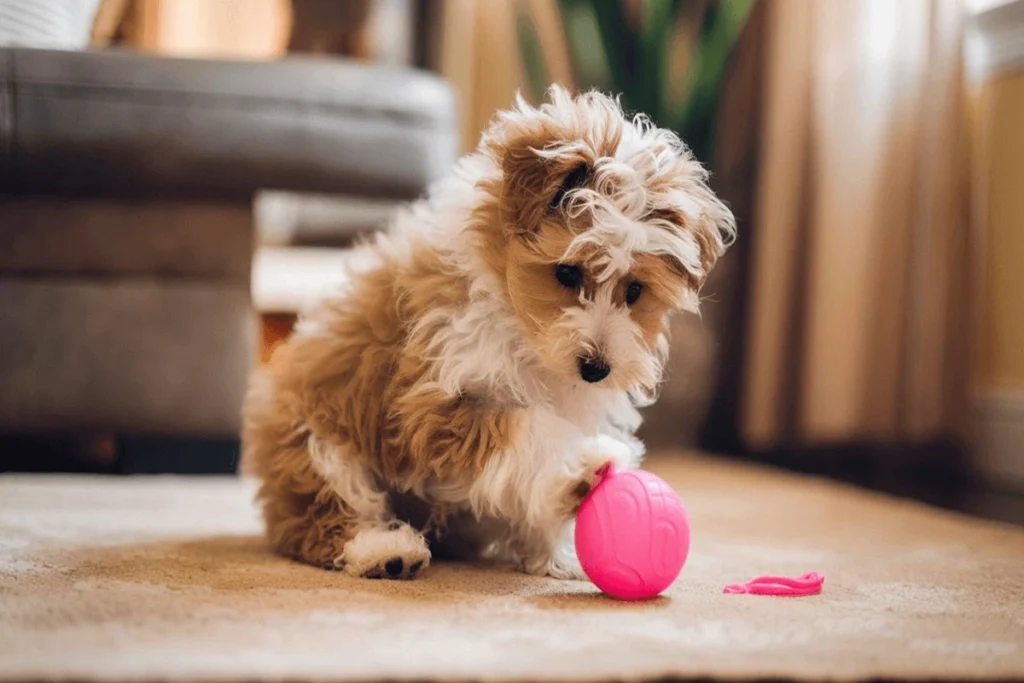
Use positive reinforcement to create a sense of trust and security. Reward your puppy with treats, praise, and playtime when they exhibit good behavior. Consistency in your interactions helps your puppy understand what to expect from you, making them feel safe and confident.
Interactive games like fetch or hide-and-seek not only keep your puppy physically active but also strengthen your connection. Additionally, regular grooming sessions, such as brushing their fur or cleaning their paws, can serve as bonding opportunities. Speak to your puppy in a gentle and reassuring tone, as your voice plays a big role in making them feel loved.
By investing time and effort into building a bond, you’ll create a deep relationship where your fluffy puppy feels like an irreplaceable member of the family.
Conclusion
Caring for a fluffy puppy is a rewarding journey filled with love, laughter, and memorable moments. These adorable bundles of joy bring endless happiness into your life, but their care requires patience, dedication, and a thoughtful approach. By preparing your home, choosing the right supplies, and staying consistent with grooming, training, and health care, you’ll set your puppy up for a lifetime of happiness and well-being.
Remember, every puppy is unique and may have individual needs based on their breed, personality, and environment. Take the time to observe and understand your puppy’s behavior, preferences, and quirks—it’s all part of the beautiful process of building a lasting bond. Whether it’s finding the best dog food, scheduling regular vet check-ups, or teaching them basic commands, every effort you make contributes to their development into a confident and healthy adult dog.
The love and attention you give to your fluffy puppy will be returned tenfold through their loyalty, affection, and playful antics. As they grow, the memories you create together will become cherished moments that last a lifetime. Embrace the challenges and joys of puppy parenthood, and don’t hesitate to seek advice or support when needed.
Now that you have this complete guide at your fingertips, you’re well-equipped to give your puppy the care they deserve. If you have more tips or questions, please share them in the comments below. Let’s celebrate the journey of raising happy, healthy, and adorable fluffy puppies together!
You Can Learn a lot More about Dogs From Here
Pick up The Best Stuff For your Pet on PetMD Official
